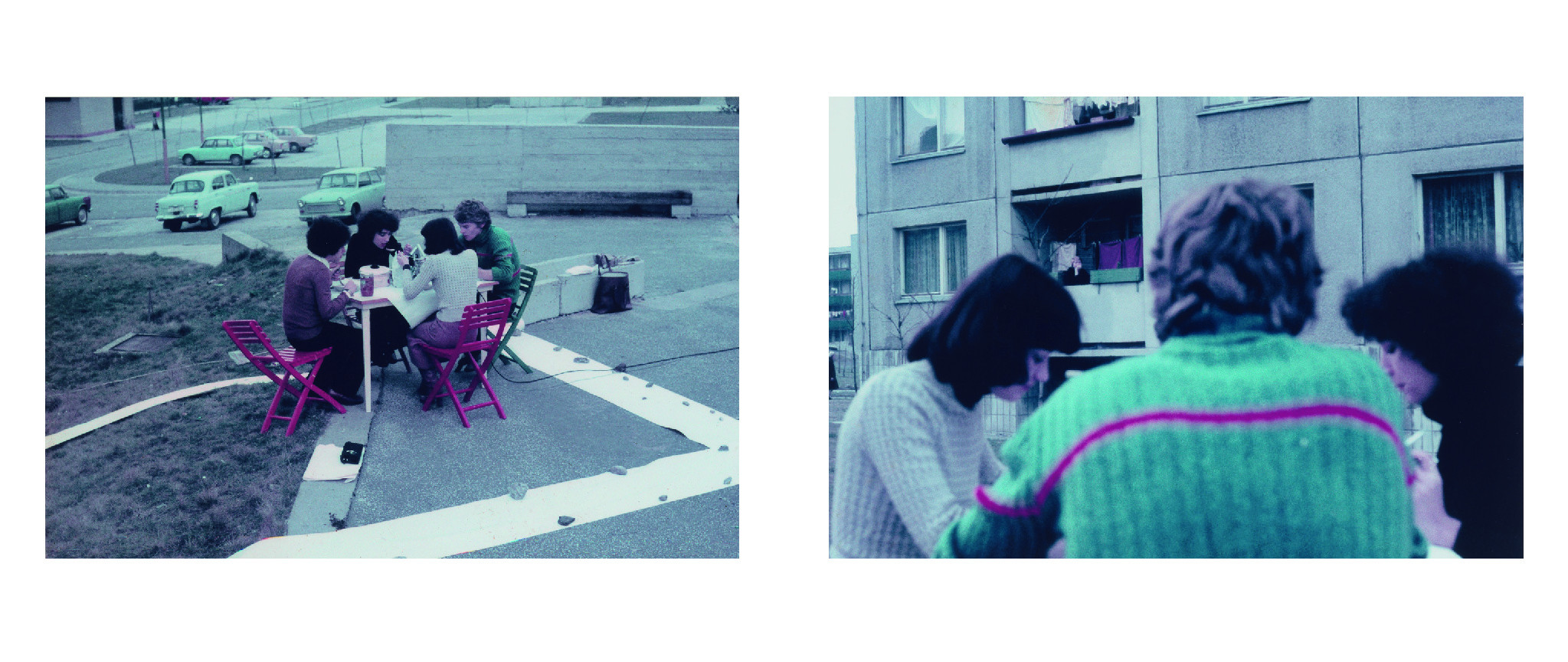
One of the protagonists of the movement Bratislava nahlas (Bratislava Out Loud) (since 1987) Ján Budaj entered the scene of action art and visual art from the opposite side – as a young rebel who liked photography passionately, but apart from its artistic facet he was more interested in life itself – moments, situations, meetings, politics. He hated the conformism of post-totalitarian society, as Václav Havel called the normalizing adaptation to “life in lies” and “self-totalitarianism” resulting from “the reluctance of the consumer to sacrifice some of his certainties for his spiritual and moral integrity.” As early as the 1970s, he mingled with the unofficial cultural scene, underground theater companies and together with Tomáš Petřivý, Vladimír (Ráchel) Archleb and Ľubomír Ďurček, they founded the situationist Dočasnú spoločnosť intenzívneho prežívania (The Temporary Society of Intensive Being). Budaj and his colleagues believed in the power of group situational action, which may awaken established stereotypes. Several such events dealt with the ecology of the city as a second human natural habitat and the issue of freedom of human public space. In the year after Charter 77, he organized a traditional Sunday lunch in Bratislava, first in the 4 April Square (currently Franciscan Square) and then in a parking lot surrounded by blocks of flats in Dúbravka (Bratislava district). “There it had a slightly transformed character, we were ingesting the incredible socialist standard, from surrounding widows we could hear clinking of cutlery, fragments of conversations and the ubiquitous sound of the regular Sunday show Roľnícka beseda. We had microphones and amplifiers on the table, and just as the sound of a modest consumer Sunday lunch and the optimistic broadcast of the only radio station was coming out of the windows, we sent it back to them, enriched by our conversations. The problem of those times was, among other things, the almost complete loss of public space. Today, few young people can imagine that at that time a gathering of just a few people was enough to raise suspicion, they were immediately inspected and bullied,” said Budaj on the occasion of the reconstruction of the event in 2009. He has devoted himself to art and artistic events in addition to systematic environmental conservation activities.